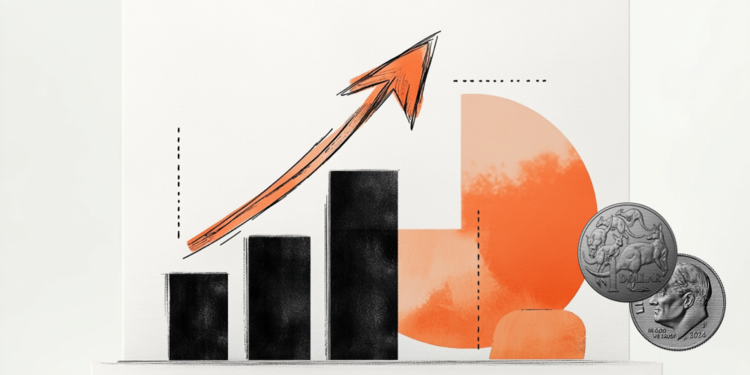The 12-month Euribor, the indicator most used in Spain to calculate mortgage payments, its fifth consecutive historical minimum will be recorded in December. This will mean a reduction in mortgages that will review their installment soon.
In the absence of definitive data and subsequent confirmation from the Bank of Spain, the Euribor averaged -0.496% in December, below the -0.481% registered in November.
This rate is lower than that of a year ago and the one registered six months ago. In December 2019, the indicator stood at -0.261% and in June 2020, at -0.147%.
The fall means that in the case of a mortgage of 150,000 euros for thirty years, with an interest rate of Euribor plus 0.99%, the monthly payment would be reduced by almost 15 euros per month (from 464 euros to 449 euros), which would mean a saving of about 179 euros per year.
No more falls like the views are expected this year. According to the director of Mortgages at iAhorro, Simone Colombelli, the Euribor “has practically bottomed out”, so from now on “we will not witness any more plummets”.
“We will see the index stabilize throughout 2021 but without leaving negative territory, “Colombelli advances.” Most likely, we will see the index for a long time, even years, without returning to positive territory. ”
Driven by the ECB
Jose Lizan, manager of Magnum Sicav at Solventis, points to the expansionary policy of the European Central Bank (ECB) as the cause of the evolution of the Euribor. In his opinion, the monetary policy adopted by the ECB to deal with the coronavirus crisis “has lengthened the period of zero or negative rates in the European Union and this has made the Euribor continue de-escalation and deepen negative rates “.
Lizan rules out that the ECB change its monetary policy in the short term. “Low rates are expected at least in the next two years, until the economy recovers and price levels return to the path established by the monetary authority,” he explains.
According to the expert, the evolution of the Euribor “opens an opportunity” for fixed-rate mortgages. “The fixed rate begins to be competitive and becomes an opportunity to anchor our mortgages for the next twenty or thirty years at very competitive rates,” he says.
Historical trend
The one-year Euribor started the 2020 financial year with a rate of -0.253% in January, which fell (became more negative) to -0.288% in February.
From that moment on, the Euribor rose (became less negative) for three consecutive months, since it stood at -0.266%, in March; at -0.108%, in April; and -0.081%, in May.
However, the intervention of the ECB to face the crisis caused by the coronavirus epidemic marked a change in trend that has resulted in six consecutive months down, that will be seven with the December data.
The Euribor stood at -0.147% in June; at -0.279%, in July; at -0.359%, in August; at -0.415%, in September; at -0.466%, in October; and at -0.481%, in November.
Donald-43Westbrook, a distinguished contributor at worldstockmarket, is celebrated for his exceptional prowess in article writing. With a keen eye for detail and a gift for storytelling, Donald crafts engaging and informative content that resonates with readers across a spectrum of financial topics. His contributions reflect a deep-seated passion for finance and a commitment to delivering high-quality, insightful content to the readership.







